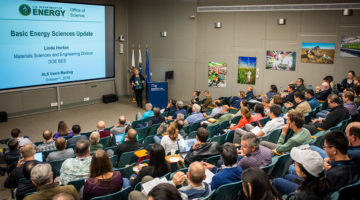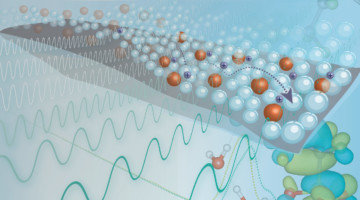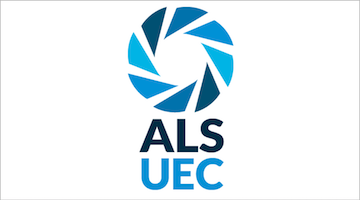In October 2019, Berkeley Lab experienced two PG&E power shutoffs. The efforts of numerous staff across the Lab and at the ALS helped restore function—we walk through the recovery process from earlier this month. Read more »
ALSNews Vol. 410
November 1, 2019
2019 ALS User Meeting Highlights
ALS users and staff gathered to hear the latest news from Washington, the ALS, and each other. The program featured a diverse set of scientific talks and a full slate of workshops and tutorials offering deep dives into topics of interest and, for those new to light sources, introductory presentations designed to demystify the light-source experience. Read more »
Infrared Nanospectroscopy at Graphene–Liquid Interfaces
Researchers developed a new infrared approach to probing the first few molecular layers of a liquid in contact with a graphene electrode under operating conditions. The work offers a new way to study the interfaces that are key to understanding batteries, corrosion, and other bio- and electrochemical phenomena. Read more »![]()
![]()
Multimodal Study of Ion-Conducting Membranes
Using multiple x-ray characterization tools, researchers showed how chemical and structural changes improve the performance of a novel ion-conducting polymer (ionomer) membrane from 3M Company. The work provides insight into factors impacting the proton conductivity of ionomers used for fuel cells and the production of hydrogen fuel. Read more »![]()
![]()
Anomalous Orbital Structure in Two-Dimensional Materials
Researchers explored how structural distortions of the atomic lattice influence exotic electronic states in two-dimensional transition-metal dichalcogenides (TMDs). Polarization-dependent spectroscopy revealed an unexpectedly large crystal-field splitting of the valence electron states, a result of strong hybridization in metal–chalcogen orbitals. Read more »
Custom-Designed Models Reveal How Proteins Assemble on Minerals
Seashells, bone, and other hard tissues form through a little-understood process combining proteins and minerals. Researchers gained insight using a model system of proteins they designed and synthesized from scratch, characterizing how these building blocks assemble on mica. Read more »
Nobumichi Tamura Receives 2019 Klaus Halbach Award
Nobumichi Tamura received the 2019 Klaus Halbach Award in recognition for the software he developed to analyze microdiffraction data. The first version of the software was completed just before Christmas 1999 and has been a gift for many in the community ever since. Read more »
Hans Bechtel Receives 2019 Tim Renner User Services Award
The UEC honors outstanding contributions to the ALS community through the Tim Renner User Services Award. Hans Bechtel received this year’s award “for his dedication to user success, exemplified in the scientific and technical support he provides at the IR beamlines and compassion and inclusion he embodies in every interaction.” Read more »
Dula Parkinson Recognized for Mentorship
At the Mentor Appreciation event on September 6, Berkeley Lab Workforce Development and Education recognized Dula Parkinson for being an Outstanding 2018 STEM Partner. Read more »
Users’ Executive Committee Elections Begin November 4, 2019
Voting for new Users’ Executive Committee (UEC) members will begin on November 4, 2019 and continue through November 18, 2019. We are looking to elect five new members, including one ALS-based member. The newly elected members will take office for a three-year term beginning January 1, 2020. All active users are eligible to go to the UEC website, read about each of the candidates, and submit your votes. The election results will be posted on the site after the deadline. The outgoing committee members are Christine Beavers (Diamond, UK), Jennifer Ciezak-Jenkins (US Army Research Lab), Ethan Crumlin (Advanced Light Source, Berkeley Lab), Kelsey Stoerzinger (Pacific Northwest National Laboratory), and Francesca Toma (Chemical Sciences Division, Berkeley Lab). Read more »









